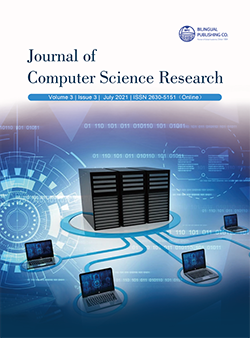
Unmanned Drug Delivery Vehicle for COVID-19 Wards in Hospitals
DOI:
https://doi.org/10.30564/jcsr.v3i3.3489Abstract
The prime reason for proposing the work is designing and developing a low-cost guided wireless Unmanned Ground Vehicle (UGV) for use in hospitals for assistance in contactless drug delivery in COVID-19 wards. The Robot is designed as per the requirements and technical specifications required for the healthcare facility. After a detailed survey and tests of various mechanisms for steering and structure of UGV, the best mechanism preferred for steering articulated and for body structure is hexagonal as this approach provides decent performance and stability required to achieve the objective. The UGV has multiple sensors onboard, such as a Camera, GPS module, Hydrogen, and Carbon Gas sensor, Raindrop sensor, and an ultrasonic range finder on UGV for the end-user to understand the circumferential environment and status of UGV. The data and control options are displayed on any phone or computer present in the Wi-Fi zones only if the user login is validated. ESP-32 microcontroller is the prime component utilized to establish reliable wireless communication between the user and UGV.
These days, the demand for robot vehicles in hospitals has increased rapidly due to pandemic outbreaks as using this makes a contactless delivery of the medicinal drug. These systems are designed specifically to assist humans in the current situation where life can be at risk for healthcare facilities. In addition, the robot vehicle is suitable for many other applications like supervision, sanitization, carrying medicines and medical equipment for delivery, delivery of food and used dishes, laundry, garbage, laboratory samples, and additional supply.
Keywords:
Unmanned ground vehicle; Surveillance; Wireless communication on Wi-Fi; HealthcareReferences
[1] F. Le Menn, P. Bidaud and F. Ben Amar, “Generic differential kinematic modeling of articulated multi-monocycle mobile robots,” Proceedings 2006 IEEE International Conference on Robotics and Automation, 2006. ICRA 2006., Orlando, FL, USA, pp. 1505-1510, 2006. DOI: https://doi.org/10.1109/ROBOT.2006.1641921
[2] Valjaots, Eero, and Raivo Sell. “Energy efficiency profiles for unmanned ground vehicles/Energiaefektiivsuse profiilid mehitamata soidukitele.” Proceedings of the Estonian Academy of Sciences, vol. 68, no. 1, pp. 55 onwards, 2019.
[3] Hellström, Thomas, Kinematics equations for differential drive and articulated steering, Department of Computing Science, Umeå University, Book, 2011.
[4] Tavakoli, Mahdi, Jay Carriere, and Ali Torabi, “Robotics, smart wearable technologies, and autonomous intelligent systems for healthcare during the COVID-19 pandemic: An analysis of the state of the art and future vision,” Advanced Intelligent Systems 2.7, Article, Issue 6, 2020. DOI: https://doi.org/10.1002/aisy.202000071
[5] Khan, Zeashan Hameed, Afifa Siddique, and Chang Won Lee. “Robotics utilization for healthcare digitization in global COVID-19 management.” International journal of environmental research and public health 17.11 Article, Issue 5, 2020. DOI: https://doi.org/10.3390/ijerph17113819
[6] V.N. Iliukhin, K.B. Mitkovskii, D.A. Bizyanova, A.A. Akopyan, “The Modeling of Inverse Kinematics for 5 DOF Manipulator,” Procedia Engineering, Volume 176, pp. 498-505, 2017.
[7] Jean-Luc PAILLAT, Philippe LUCIDARME, Laurent HARDOUIN, “Evolutionnary stair climbing controler for Unmanned Ground Vehicles,” IFAC Proceedings Volumes, Volume 42, Issue 16, pp. 131- 136, 2009.
[8] Lakshminarasimhan Srinivasan, Julian Scharnagl, Klaus Schilling, “Analysis of WebSockets as the New Age Protocol for Remote Robot Tele-operation,” IFAC Proceedings Volumes, Volume 46, Issue 29, pp. 83-88, 2013.
[9] Merlin Morlock, Niklas Meyer, Marc-André Pick, Robert Seifried, “Real-time trajectory tracking control of a parallel robot with flexible links,” Mechanism and Machine Theory, Volume 158, 2021.
[10] Lakshminarasimhan Srinivasan, Julian Scharnagl, Zhihao Xu, Nicolas Faerber, Dinesh K. Babu, Klaus Schilling, “Design and Development of a Robotic Teleoperation System using Duplex WebSockets suitable for Variable Bandwidth Networks,” IFAC Proceedings Volumes, Volume 46, Issue 29, 2013.
[11] Vu Phi Tran, Matthew A. Garratt, Ian R. Petersen, “Multi-vehicle formation control and obstacle avoidance using negative-imaginary systems theory,” IFAC Journal of Systems and Control, Volume 15, 2021.
[12] Lingfei Qi, Tingsheng Zhang, Kai Xu, Hongye Pan, Zutao Zhang, Yanping Yuan, “A novel terrain adaptive omni-directional unmanned ground vehicle for undeground space emergency: Design, modeling and tests,” Sustainable Cities and Society, Volume 65, 2021.
Downloads
How to Cite
Issue
Article Type
License
Copyright © 2021 Author(s)

This is an open access article under the Creative Commons Attribution-NonCommercial 4.0 International (CC BY-NC 4.0) License.




 Uttam U. Deshpande
Uttam U. Deshpande





